Good Games Publishing has come out with some spectacular games that have been popular within the hobby including Unfair (2017), Funfair (2021), and Guild Master (2020). Land vs. Sea is unlike any of their previous games, but will most definitely be just as popular. A tile laying game that’s perfect for 2 players but can be played with 3 and 4 with some rule changes, Land vs. Sea highlights cartography as players take turns forming a map of land and sea. In the 2 player version, one player will score points from the land and the other from the sea. The game has simple rules with a couple layers of depth, but nothing too intimidating. It comes with double sided map tiles so there is some hidden and public information, and scoring can be simple or changed to add more depth and strategy.
What’s in the Box?
- 1 starting map tile
- 1 volcano/whirlpool tile
- 58 double sided map tiles
- 2 double sided player aids for scoring options
- 1 Scorepad
- 7 wooden discs (3 land, 3 sea, and 1 cartographer)
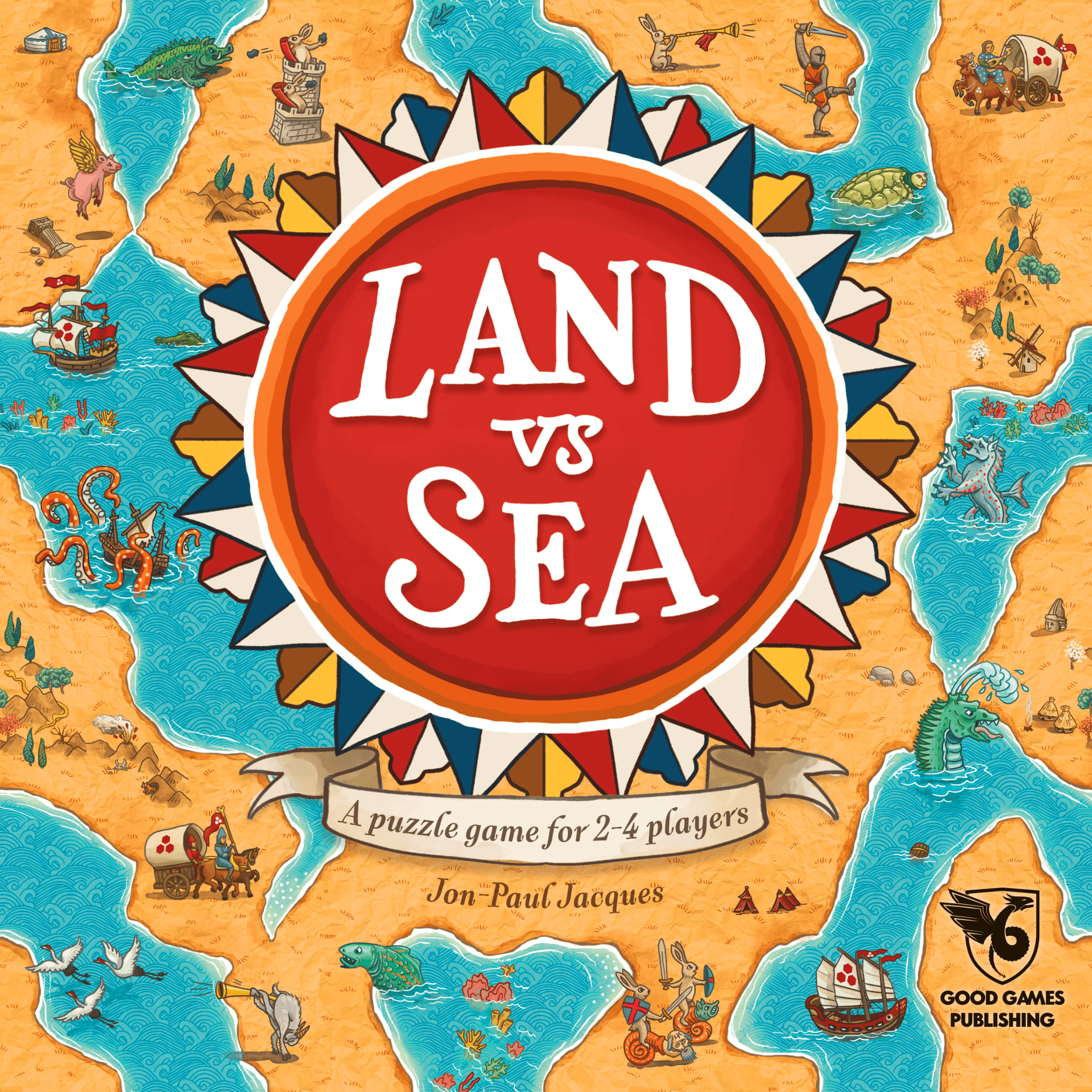
How does it play?
Land vs Sea consists of basic rules that you will always include, but then when you know the basics you can add additional scoring rules making the game more and more complex with the additional layers.
Depending on how many players are playing the game, each player will be assigned to something they are working to build. Land team scores points for enclosed land sections, and the sea team gains points for sea areas that get closed off. If playing with 3 players, the third player will gain points for mountains and coral. A 4 player game will form teams, 2 players for the land, and 2 players for the sea. Now, these rules can change depending on how you decide to play the game, so if something sounds odd, it’s because the rule can be turned on or off.
Players start the game by placing all the tiles in 2 large piles, excluding the starting tile and the Volcano/Whirlpool tile. A draft is done starting with the first player taking the top tile of either stack and going around until each player has 2 tiles. These tiles are double sided, so public knowledge shows one possible design to add to the overall map, but the other side might hide something better or worse. Players keep the 2 tiles in front of them during the game without showing off the other side.
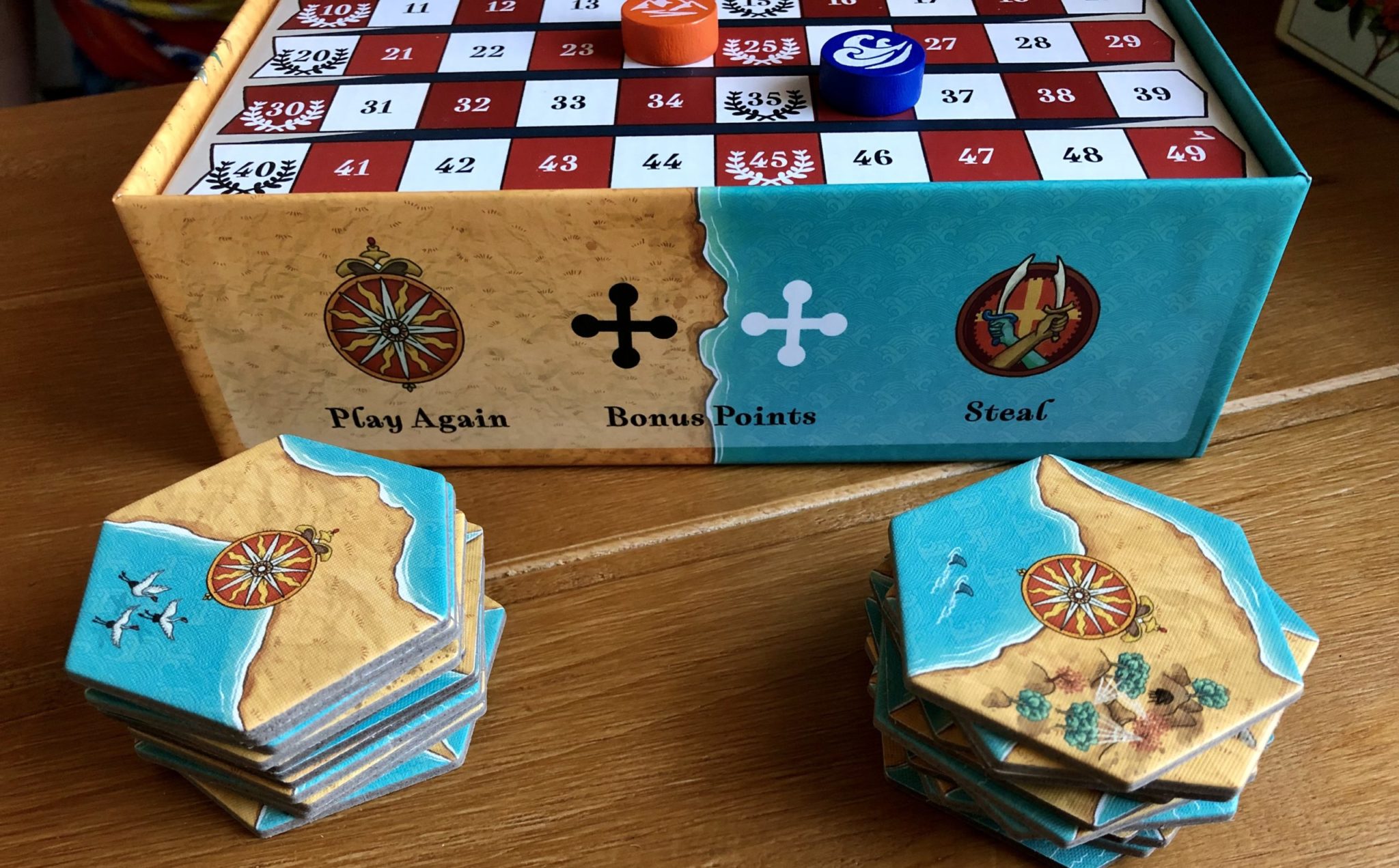
Players then take turns adding 1 tile to the map at a time. The tile needs be placed so one of its sides touches another, and land needs to touch land and water needs to touch water. If the tile played has an action icon on it, that player can then perform that action. One of these actions is a play again action letting you place your second and last tile onto the board using whichever side you wish. The other action is a steal action where you take a tile from another player and keep it in front of you. Actions can be very helpful when you see an opportunity you don’t want another player to get, or to get a tile that would be perfect for you.
After placing the tile and taking its action, if present, players will score if that tile completes an enclosed area of any type. The land player will score 1 point for each tile contributing to the finished enclosed land area no matter who completed it. The same for the sea, 1 point per tile of the completed area no matter who completed it. Whoever completes the area, so whoever places the tile, will score points from any “x” symbols that are present in the completed area.
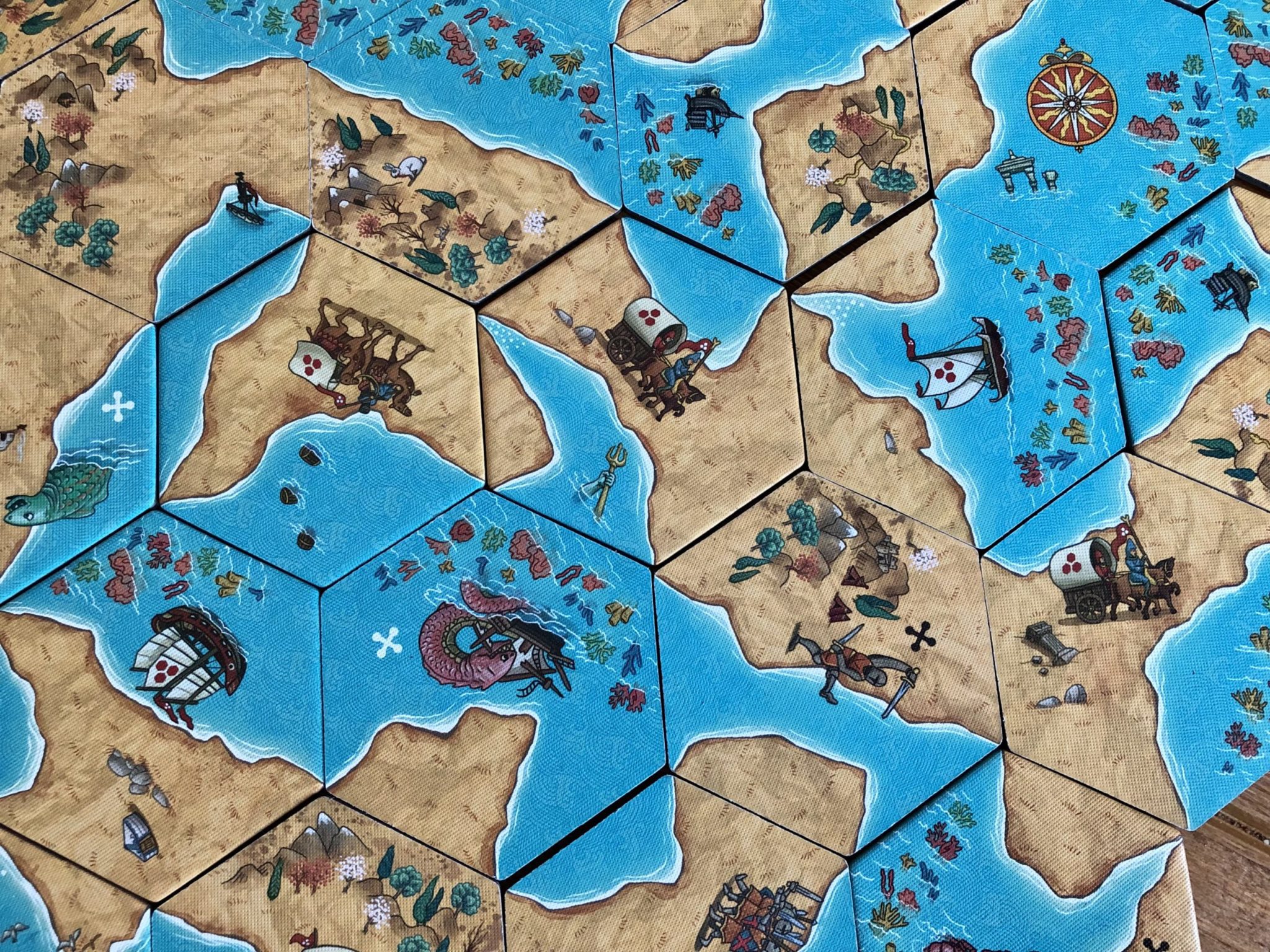
If playing with waypoints, which I will explain later, you can then place one of your tokens after scoring from completed areas. Afterward, you can replace your tiles, drawing from either stack till you have 2 tiles. If someone steals your tile on their turn, you will then only be able to place the 1 tile in front of you, but after your turn you will draw back up to 2 tiles.
Players go in a clockwise order placing tiles and following these basic rules, making a large map that all players play on. Whenever a player creates a hole in the map, or a space surrounded by 6 f the same type of edges, the volcano or whirlpool tile is placed there and scores 5 bonus points from any “x’s” listed on that tile if the area is completely enclosed, or it will score 5 points to the player who eventually finishes that area.
Score is kept with players moving their tokens on the inside of the box with the provided score track. When the last tile of the game is placed onto the map, the player with the most points wins the game.
Additional scoring options
Mountain and Coral
Mountain and Coral scoring can be added in a 2 or 4 player game to provide more ways to score points and make the game even more strategic. In a 3 player game, it is used for the third player to score points within the land and sea. The rule between the player counts are a tad different, but there is a tile that can be placed out showing how the rule works. The 2 and 4 player rule on one side, and the 3 player rule variant on the other side.
So if a tile has mountains or coral, they are played like usual, however no matter who places it, when matching side touch one another, for example a mountain touches a mountain side, the land will immediately score 1 point per mountain section in the whole chain of connected mountains. This is also the same with the coral. So, if you are the sea player, you will want to try to place coral pieces so they either touch another or have the ability to do so in the future. But you will also want to place any mountains on the tiles you place so they don’t touch another mountain side.
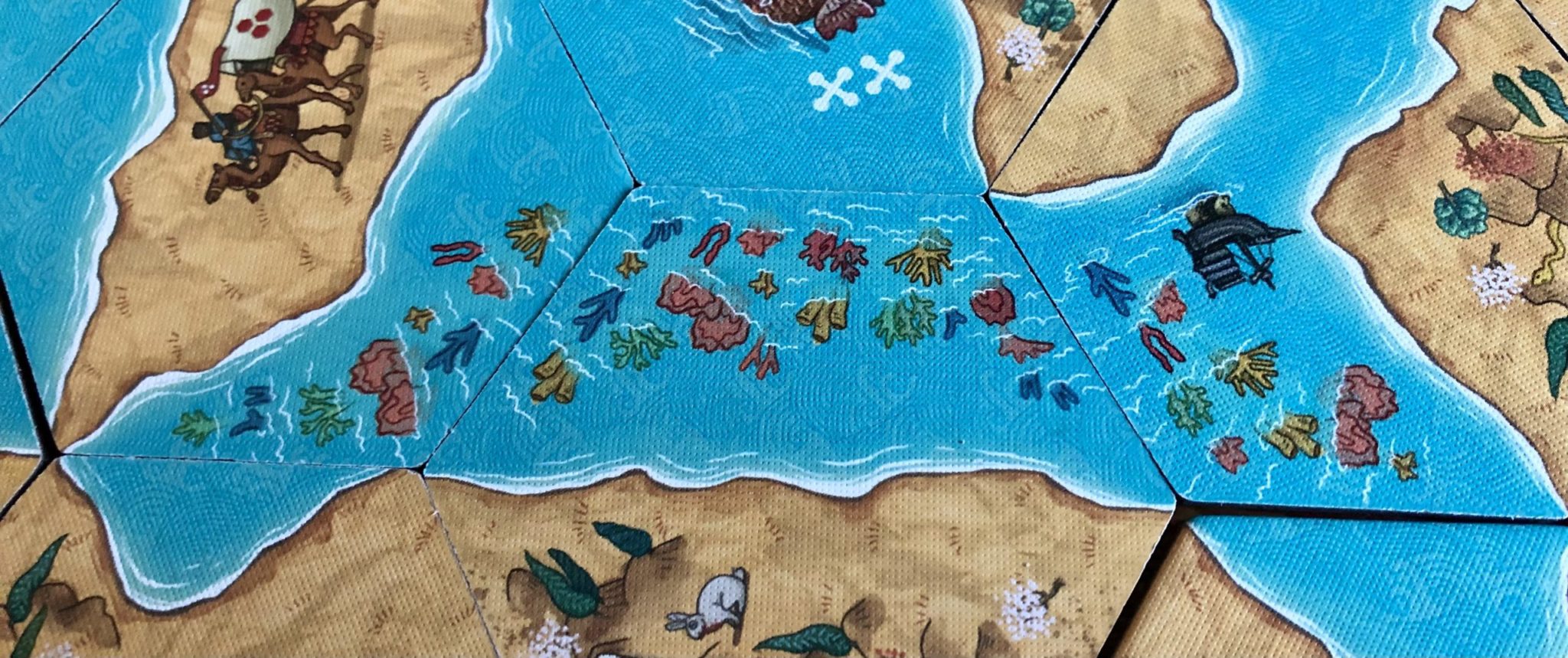
Caravan and Ships
Caravan & Ship scoring adds yet another layer in scoring in the game. Some tiles contain these and they are placed out like normal. Whoever places a caravan or ship adjacent to another caravan OR ship immediately scores 2 points. At the end of the game, there is additional scoring with the caravan and ship tiles as well.
When multiple adjacent tiles that contain caravans or ships are placed together, they form trade routes. Each trade route is evaluated at the end of the game to see if there are more caravans or more ships. If there are more caravans than ships, the land player will score 1 point per caravan or ship within that trade route. If there are more ships, the sea player score 1 point per caravan or ship in the trade route. If playing a 3 player game, the 3rd player scores 1 point per caravan and ship if the trade route contains an equal amount of ships and caravans. In a 2 player game, no points are awarded.
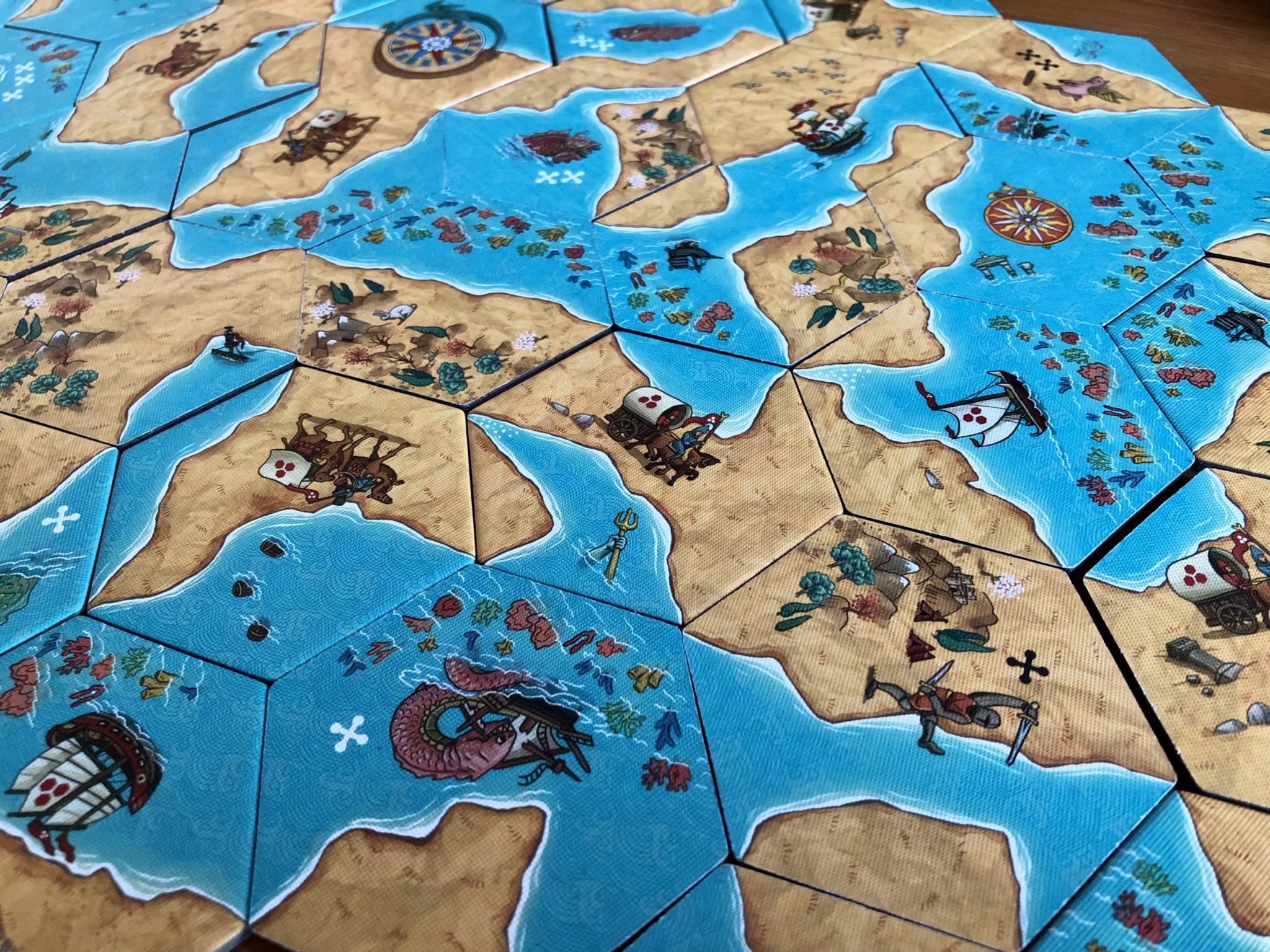
Waypoints
Players have tokens that they can place onto a tile on the map during their turn. This token needs to be placed on the tile with at least 1 open edge. Whenever a player places a tile to complete the area where a token is placed, or when the tile containing a waypoint token is surrounded by 6 other tiles, the waypoint is returned back to the player or team it belongs to. Whoever returns the token to its owner will score 1 extra point.
Each additional scoring options adds Moore depth to the game, but the game still has great gameplay without all scoring options being added. You can decide what might be the best for your group, and play the game that is most enjoyable for the most. When players want something added or changed, you can always change which optional additional rules you use.
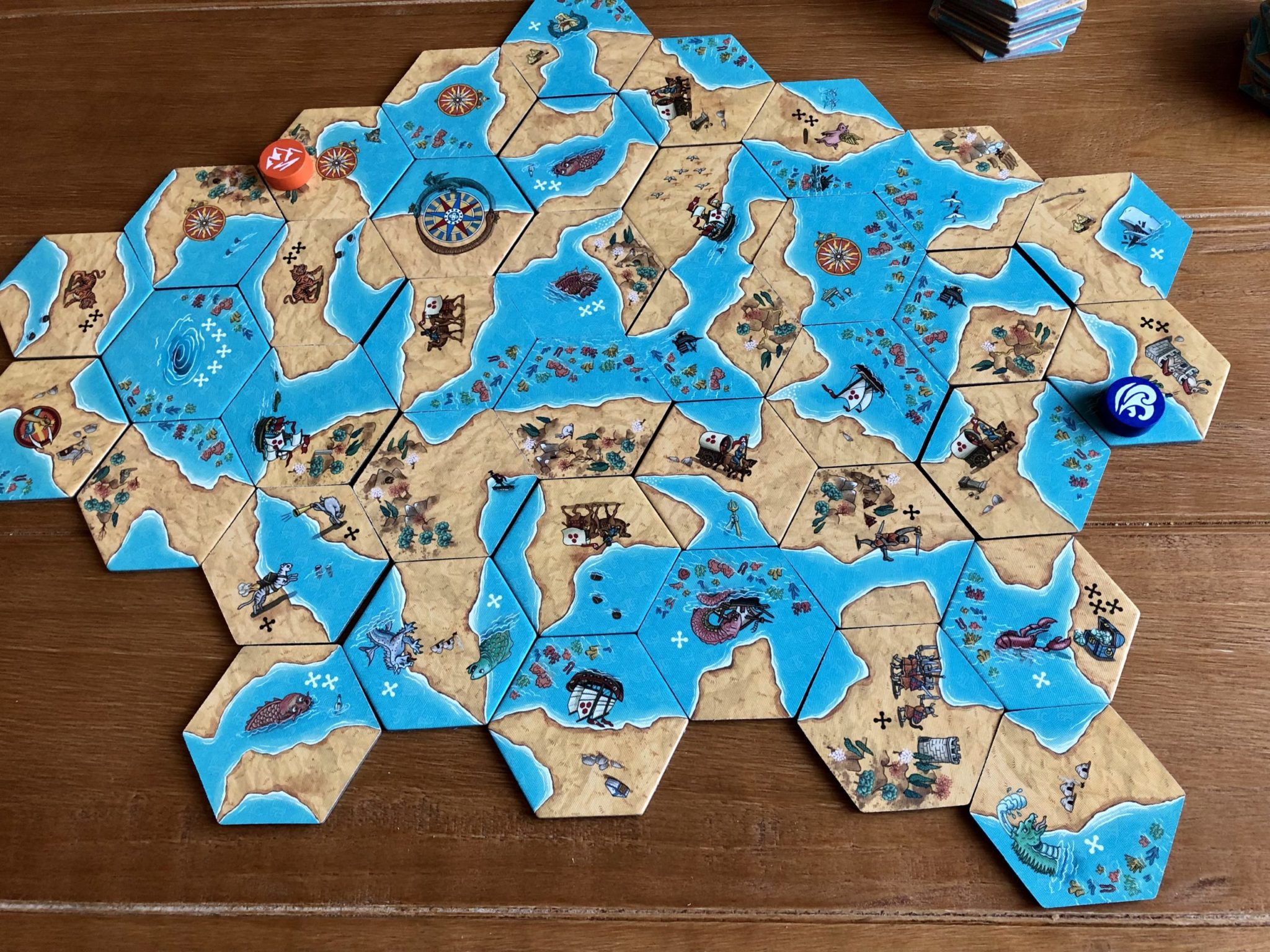
The Verdict
Land vs Sea is like an onion where you pick how many layers of goodness you want. The starting rules set is a very nice and simple base for the game that has a sense of strategy, but mostly it sticks to the basics. If you want to increase difficulty, you can add in some of the intermediate rules which takes some of that nice art you see on the tiles and turns that art into more points.
The one thing that players can start getting confused about is who actually gets the points. Ultimately, the player that finishes the closed off area of land or sea doesn’t matter, as the points will always go toward the player who is in charge of the land or the sea. But players can steal points from the other player’s efforts by maybe finishing off an area that the other player probably would have finished anyways and taking the bonus points from the “x’s,” for example. This is only recommend when you can get some decent points from it, as you will be handing the other player points for that effort as well.
Although it can be confusing when it comest to who gets the points for things, if and when you figure it out, they blend together so much that you tend to try to math it out in your head to see if you benefit or not. You will most likely not want to help the other player unless it is either helping you also, lets you steal some points, or sets you up for a strategic move.
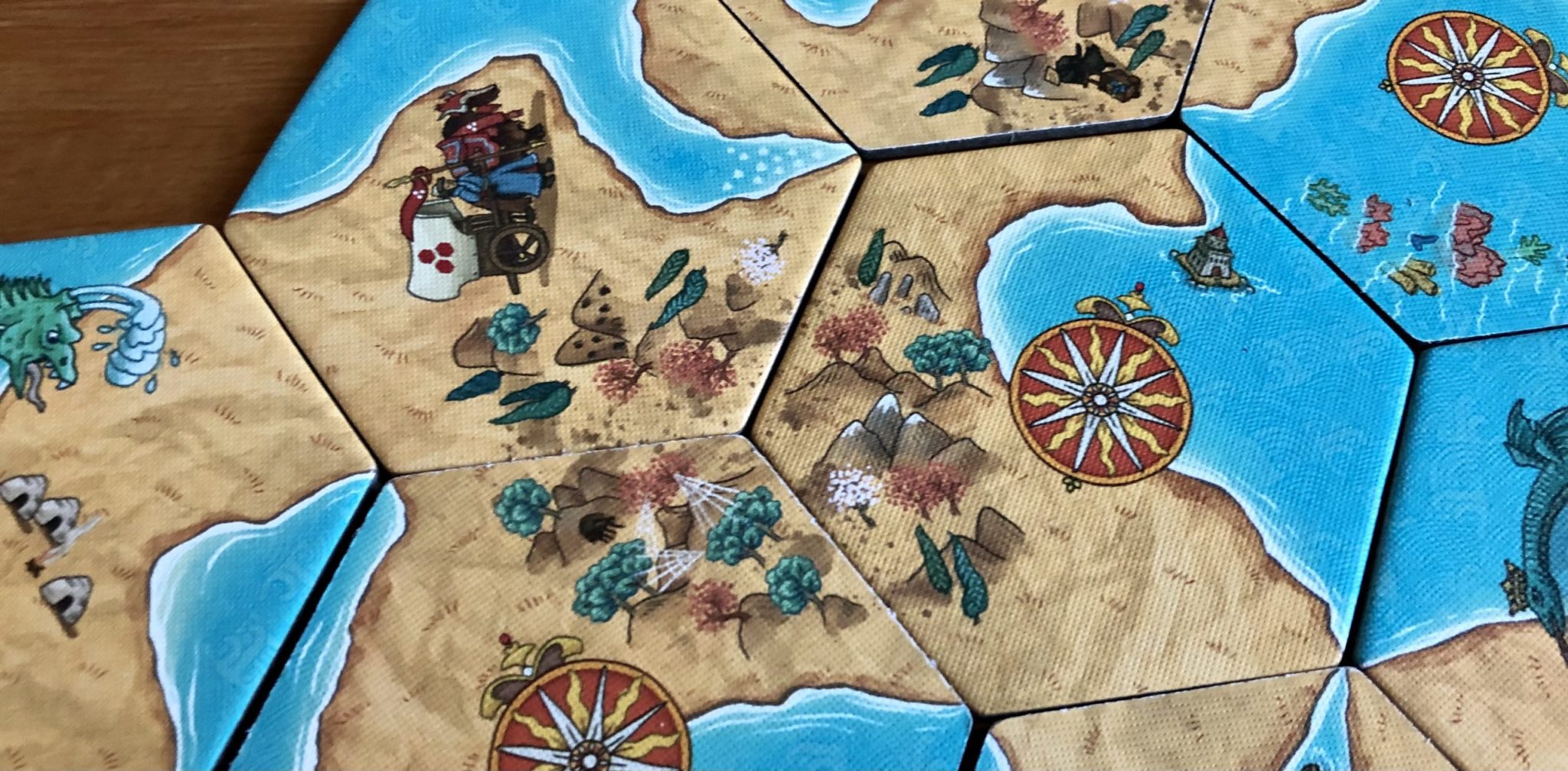
Another nice aspect of the game is that while Land vs Sea plays similarly with different player counts, it feels like it plays differently due to the change of strategies required. The 3 player variant is the biggest change in how your play the game, as it’s easy to know how to attack and defend the land and sea players, but harder to think of how to attack or defend a third player that is playing totally differently.
The double sided tiles are also an added layer to that onion. As mentioned previously, there is public information on one side, but then players can get other opportunities when they look at the other side of their tiles. This can also be worth mentioning when trying to steal tiles from the other player.
It’s worth noting that this game doesn’t include anything fancy, nothing that just blows your away. But the game is a nice, simple onion with any number of layers you’d like on it. The art is intended to look like a cartographers map from the 1800s, and it does a pretty good job with that. While the art can be used for some of the optional rules or scoring, some is just there to add visual spice to the game, and it’s well done.
For now, Land vs Sea will definitely be at my table, mostly because the game is super easy to understand with 2 players. 3 Players is a nice brain teaser if you are playing with other players that understand everyone else’s goals. 4 Player works but tends to evolve into a 2 player game with someone on your team that might have different plans than yourself. So if you like tile laying games where the tile placement is all about points, then you will need to get this one to your table as well.
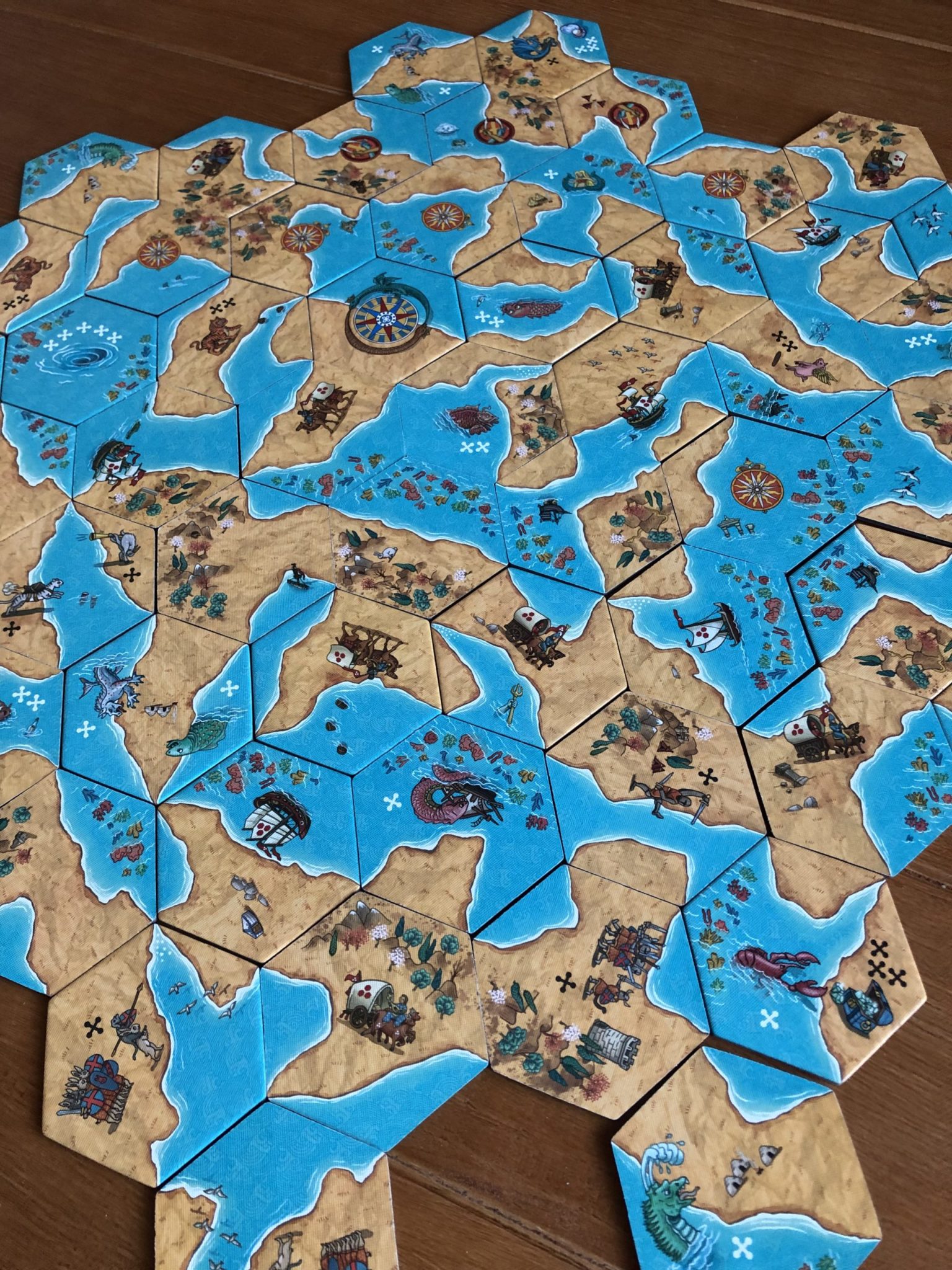
Images Courtesy of Good Games Publishing
Have strong thoughts about this piece you need to share? Or maybe there’s something else on your mind you’re wanting to talk about with fellow Fandomentals? Head on over to our Community server to join in the conversation!

